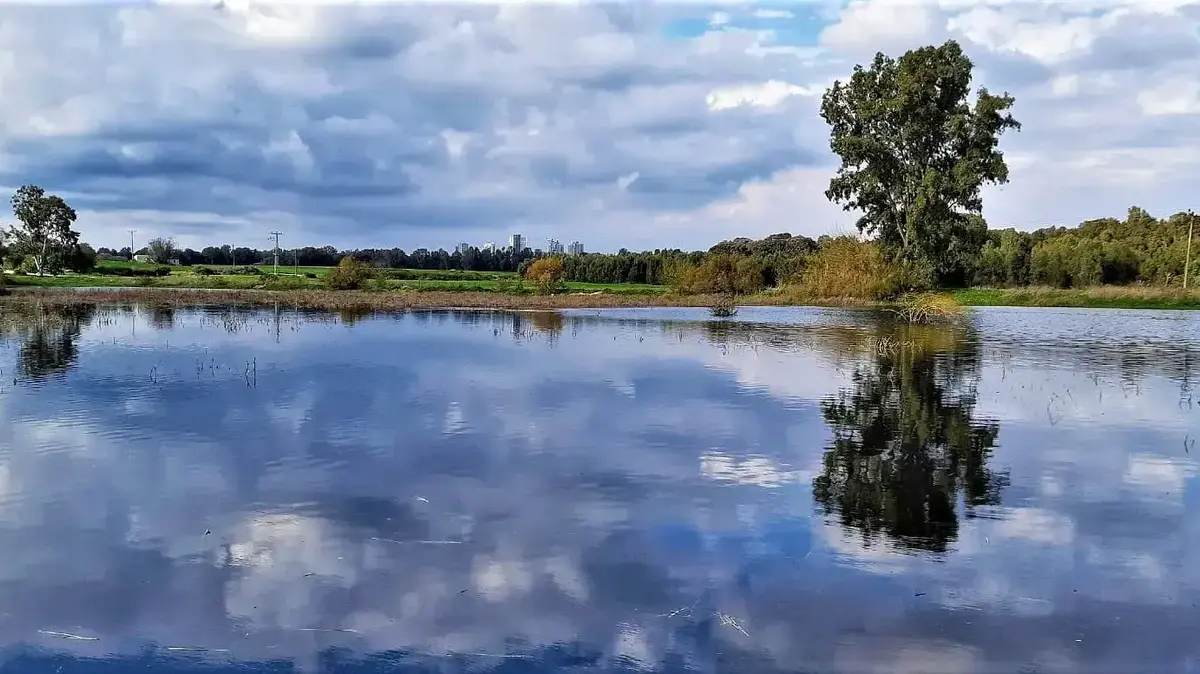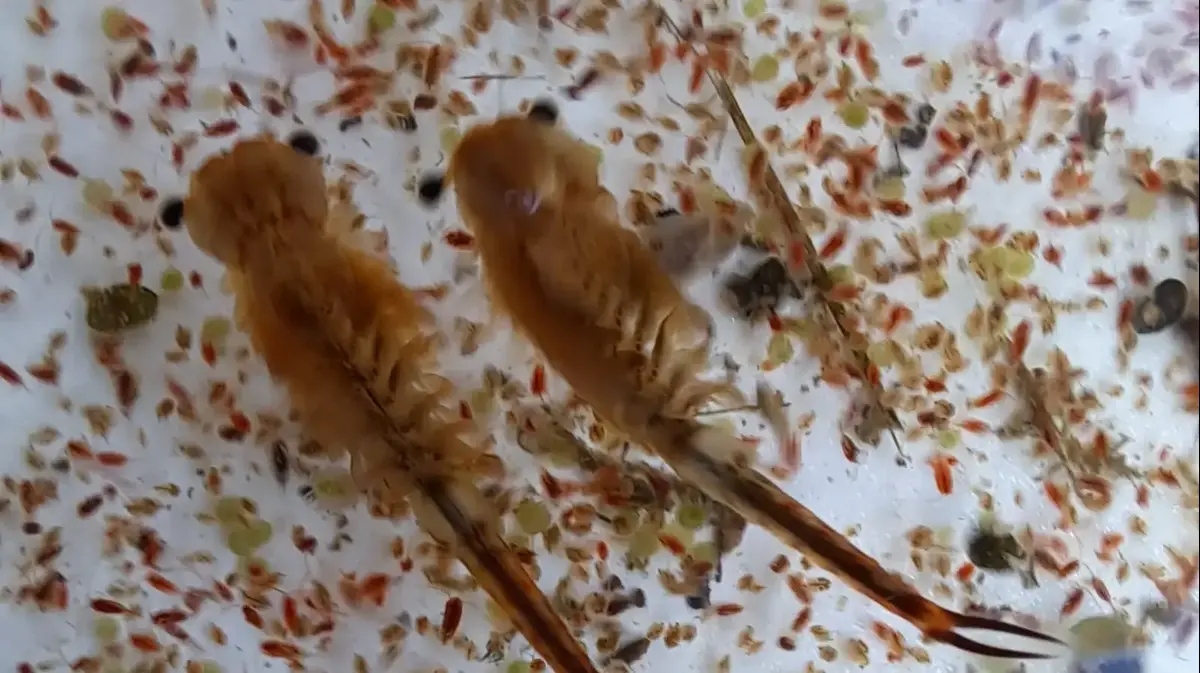Hadera Forest Winter Pool (Yaniv Levy, Nature and Parks Authority)
The State of Israel is characterized by a severe land shortage resulting from space limitations, rapid population growth and rapid development designed to respond to population growth.
As a result, the natural areas in Israel are reduced, fragmented, and frequently threatened by development pressures.
The place of the state and until today, the area of humid habitats in Israel has been reduced from about 180,000 dunams to only about 10,000.
The most striking example is the drying of the hola, but all over the country winter pools and drainage basins were dried, neighborhoods were built on streams, natural water sources were polluted and so on.
Besides the immediate impact on humans, many wild animals were also affected and, for example, the resting options of hundreds of millions of birds that pass through the country every year during their migration from Europe to Africa were greatly reduced.
On Thursday this week (2.2.23) Israel and the world will celebrate
the International Day for the Preservation of Wetland Habitats
, and this year is marked by the restoration of the humid habitats and their return to eco-hydrological function as much as possible.
"A moist habitat is an area that is flooded with water year-round or seasonally, including streams, springs, lakes, marshes and winter ponds," explains Dana Tavacnik, director of the stream restoration unit at the Nature Conservation Society.
According to her, healthy and functioning humid habitats ensure the well-being of people in the area, by providing good quality water and reducing the negative effects of extreme climate events, contributing to fine agriculture and they also maintain biodiversity, as they maintain a habitat for a rich variety of animals and plants.
"Israel has been blessed with an abundance of moist habitats, but about 90% of them have already been destroyed and destroyed since the establishment of the state due to accelerated development and construction, pumping water from streams and springs, and injecting sewage and wastewater into them on the spot," she adds.
"The few that are left today are under the threat of infrastructure and road development,
Today, only about 10,000 dunams of moist habitats remain in Israel.
A brook frog in a winter pool in Taiba (photo: Society for the Protection of Nature, Avner Rinot)
Why are humid habitats so important to man?
The Society for the Protection of Nature points out that climate change and the loss of the wide biodiversity that relies on the humid habitats require the government to set a clear goal of preserving all the humid habitats that have managed to survive so far and have not yet been destroyed, and a new road or any infrastructure should not be allowed to cross a habitat and dry it out .
Continued damage to them will only lead to the continued extinction of the species and damage to the safety and health of the residents.
Humid habitats are known as carbon dioxide absorbers as well as rain catchment areas during extreme events, if not for the environment, then they must be preserved for man.
The members of the company emphasize that there are many struggles concerning humid habitats in Israel, but two of them stand out in particular: preserving
the Naaman stream
in the north and preserving the
winter blessing in the Hadera forest
.
More in Walla!
Hurry, before it's over: a trip around the winter pools in Israel
To the full article
They want to move a road near it.
Hadera Forest Winter Pool (Photo: Nature and Parks Authority, Nature and Parks Authority)
Nahal Naaman - a gem preserved in close proximity to the massive development of the Kiryats
On the outskirts of Gush Karyot, on the western edge of the Zebulun Valley, Naaman Stream flows.
Over the years it was damaged and neglected, but in recent years they are working on its restoration.
Close to it is the nature reserve Ein Afek and Ein Namfit.
These preserve moist habitats along Nahal Naaman.
This gem has been preserved in close proximity to the massive development of the Kariya block and serves as a refuge from the crowded cities, and is a home for endangered species.
Despite this, today it is proposed to cross this area with a new road that should connect road 22 to road 6 which is expected to cross the Zebulon valley from south to north.
"The road is supposed to cross the Naaman stream and form a buffer between Ein Namfit and the Ein Afek reserve, thereby severely damaging the succession of these important habitats that have been preserved in this area. The proposal to build the road also goes against all transportation logic, since, according to the data of the Israel Routes Company that is promoting it, a road upgrade 4, which was examined as an alternative by Israel Routes, results in much better transportation results," notes Dror Boymel, director of the planning department at the Nature Protection Company.
It is proposed to cross this area with a new road that should connect Route 22 to Route 6. Nahal Naaman (Photo: Society for the Protection of Nature, Idan Barnea)
Yaer Pool and Hadera Forest - a declared rare nature reserve
South of Hadera between Highway 4 and Highway 2 there is a sequence of diverse and valuable open spaces: Hasharon Park National Park, Nahal Alexander, Hadera Forest, a forest pool and open agricultural areas.
This sequence consists, among other things, of moist habitats, including a forest pond and Nahal Alexander.
In addition, due to the area being low from its surroundings, it is characterized by high groundwater in the winter months, and even winter flooding of the forest area.
As a result, the area is characterized by many and varied moist habitats that hold many natural values, and many endangered species.
In this area, the Israel Routes Company wishes to move a road as a continuation of road 9 that was established in recent years from the east, and to its neighbor as far as road 2. With high groundwater, which includes surface and underground water flow routes, the construction of the road may seriously damage the water supply to the forest pond, which is a declared rare nature reserve," Boymel adds.
The construction of the road may seriously damage the water supply to the pool.
Siksak in the Hadera Forest winter pool (Photo: Nature and Parks Authority, Nature and Parks Authority)
The Poleg egg - the successful case
However, a determined struggle in which many organizations took part, including the Society for the Protection of Nature, the Nature and Parks Authority, the Sharon Coast Regional Council and thousands of residents, has recently ended in favor of the special nature of the Polg Swamp, the last remnant of an extensive swamp landscape that once extended in the Polg Basin.
"This is the second largest marsh after the Hula marsh, in a historical area of several thousand dunams. The Pulag marsh area is a vast open area with functioning moist habitats, a rich variety of flora and fauna, some of which are rare and in danger of local and global extinction, deserving of preservation and protection. Among other things, the area is used A base for many vertebrate species including porcupines, rabbits, foxes, mongooses, badgers and jackals. Among the species in danger of extinction that rely directly on the marsh are the common toad and marsh cat," says Dana Tavacnik, director of the stream restoration unit at the Society for the Protection of Nature.
Two endangered habitats are represented in the Poleg swamp: the moist habitat, and the habitat of the heavy soils.
These habitats have been reduced in scope in a far-reaching way over the years, to the extent that they are habitats in danger of extinction, and many of the plants in these habitats are in danger of extinction.
To date, 215 species of birds have been recorded in the Polg Egg, about 190 are observed every year.
The Poleg Swamp is a very important migration and camping site, and during the migration seasons and during the winter thousands of ducks, thousands of seagulls, hundreds of terns and rare birds of prey are found every day, including the frog eagle, which is defined as being in danger of global extinction.
For two species of hummingbirds in global danger of extinction, the crested kiwi and the common limouse, the Poleg Egg is a site of the highest importance.
As a natural area in the heart of the Sharon urban area, the marsh marsh and the moist habitats around it, hundreds of species of flora and fauna and is a central core in the largest ecological corridor in the Sharon region.
"Next to the swamp runs the coastal railway,
which is expected to be doubled as part of the coastal railway upgrade.
As part of this plan, there was an attempt to promote a new road, near the railway, at the expense of the swamp, which would continue Ayalon to Netanya.
After the struggle, the committee for national infrastructures that discussed the plan decided to cancel the promotion of the road," Boymel adds.
tourism
news
Tags
Nature Protection Society















